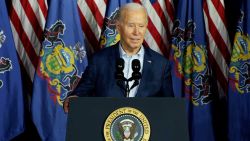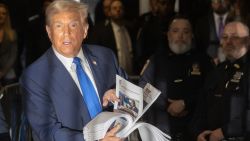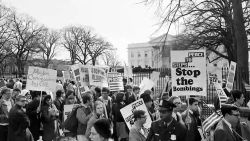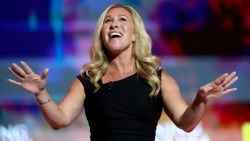The Supreme Court on Monday effectively postponed action on a major challenge to Harvard’s use of racial affirmative action, likely putting off for several months a case that could end nationwide practices that have boosted the admission of Black and Latino students for decades.
The high court issued an order asking the Biden Department of Justice to offer its views on the case, which for the nine justices’ own internal politics, means they postponed having to make a decision on whether and when to hear the controversy.
The Supreme Court set no deadline for the filing in the dispute brought on behalf of Asian Americans. If the court had outright accepted the challengers’ petition, it would have immediately added another major case to the justices’ calendar for the 2021-22 session, which already includes abortion rights and gun regulation controversies.
The challengers to Harvard contend the Ivy League campus holds Asian Americans to a higher standard and essentially caps their numbers. The school counters that it sets no limits for Asian American students and that all applicants are considered individually based on many characteristics.
The dispute has been moving through lower courts since 2014 in a case seemingly designed to get the issue back in front of the Supreme Court. The group, Students for Fair Admissions, which is supported by national conservative activists across the country, argues that as Harvard has enhanced the chances for Black and Latino applicants, it has penalized Asian Americans.
Since the lawsuit began, the composition of the Supreme Court has changed in a way to benefit opponents of affirmative action, with three new appointees of former President Donald Trump. The court last upheld university affirmative action in 2016. Two of the justices in the narrow five-justice majority were Anthony Kennedy and Ruth Bader Ginsburg, succeeded by Brett Kavanaugh in 2018 and Amy Coney Barrett in 2020, respectively.
Harvard won in lower courts, and should the justice eventually take up the case, the reconstituted high court could be poised to reverse and transform the rules for colleges trying to increase campus diversity.
In urging the justices to let its lower court victory stand, Harvard lawyers argued that judges applied settled Supreme Court law to the facts of the case and that no split in the larger issue exists among other US courts.
Harvard contends it considers race “only in a flexible and nonmechanical way” and that such consideration “benefits only highly qualified candidates.” It has insisted throughout the litigation that its admissions officers do not discriminate against Asian American applicants.
More broadly, Harvard urged the justices not to retrench on its precedents that date to 1978 and have allowed screening based partly on race to build an inclusive, diverse study body.
“Universities across the country have followed this precedent in structuring their admissions processes,” Harvard lawyers said. “And the American public has looked to this precedent for assurance that the Nation recognizes and values the benefits of diversity and that the path to leadership is open to all.”
When the Supreme Court in 2003 reaffirmed the 1978 precedent, now-retired Justice Sandra Day O’Connor emphasized a university’s mission to train future leaders and wrote, “Effective participation by members of all racial and ethnic groups in the civic life of our Nation is essential if the dream of one nation, indivisible, is to be realized.”
Harvard’s lead counsel is Seth Waxman, a former US solicitor general in the Clinton administration, who has been on the Harvard team since the start of the case, partly because all involved in the litigation believed it headed toward the increasingly conservative Supreme Court.
Shepherding the Students for Fair Admissions team on appeal has been William Consovoy, who has also been on the case from the beginning. (Consovoy has separately undertaken prominent cases for Trump, including an attempt to shield his financial records from the Manhattan district attorney.)
In the SFFA appeal, he urged the high court to reverse decisions that allowed race to be a “plus” in screening, arguing “it’s a minus for Asian Americans.” The challengers say Harvard will continue to use race “until a court makes it stop.”
Secretive admissions practices revealed
A 2018 trial in the Harvard case produced reams of data and documents and multiple witnesses, as the otherwise secretive admissions practices at the Ivy League campus were laid bare. The benefits of an African American or Latino background were shown, as were the advantages of family wealth, legacy connections to the school and athletic superiority.
The challengers to Harvard argued that Asian American applicants were penalized in a process that rated them as “book smart and one-dimensional.” Lower court judges rejected the claim as they ruled that Harvard does not unlawfully discriminate.
Asian American advocates have not been united in support or opposition to the case, attesting to the diversity within a community that traces its heritage to many different countries and had experienced dissimilar social and economic prospects in the US.
In the current Harvard freshmen class (headed for a 2024 graduation), Asian Americans make up 24.6% of the class; African Americans 13.9%; Latinx 11.8%; and Native Americans and Native Hawaiians, 2.0%. Harvard officials say the remaining category, 47.7%, is overwhelmingly White students. Those percentages have shifted slightly in recent years.
Affirmative action cases backed by noted conservative activist
The Harvard case, and a similar claim previously filed against Yale, were engineered by conservative activist Edward Blum, a longtime opponent of racial policies who previously enlisted White students to challenge policies that had long benefited Blacks and Latinos.
Blum also generated the lawsuit that led to the Supreme Court’s 2013 decision in Shelby County v. Holder that dramatically curtailed the reach of the landmark Voting Rights Act. That VRA effort was years in the making, and Blum has similarly taken a long view of the current litigation, hoping of a reversal of precedent by the current court under Chief Justice John Roberts.
In the new case, there are no individual Asian American plaintiffs. Blum says his coalition includes applicants who were denied admission and prospective applicants. The case was brought under Title VI of the 1964 Civil Rights Act, which forbids schools that receive federal funds from discriminating on race.
The Trump administration had backed the challengers against Harvard, and its arguments were similarly spurned by lower court judges.
At the trial level, US District Court Judge Allison Burroughs found that while Harvard’s admissions process was “not perfect,” it met the requirements of Supreme Court precedent. She said race-conscious admissions hold “an important place in society and help ensure that colleges and universities can offer a diverse atmosphere that fosters learning.”
The 1st US Circuit Court of Appeals similarly ruled that Harvard’s “limited use of race” in admissions was in line with Supreme Court precedent.
The justices first endorsed racial affirmative action in a 1978 decision known as Regents of the University of California v. Bakke. The 5-4 splintered decision allowed colleges and universities to consider race among many criteria in admissions, but it also forbade quotas.
In that decision, the justices cited Harvard as a model for affirmative action. Referring to that history, the SFFA challengers argued in their appeal to the justices that, “Harvard is where this Court’s approval of race-based admissions began, and it is a fitting place for that approval to end.”
And they added, picking up on a familiar line of Chief Justice John Roberts, “That fact, plus the extensive record developed below, make this case an ideal place to ‘stop discrimination on the basis of race’ by ‘stop[ping] discrimination on the basis of race.’”






















